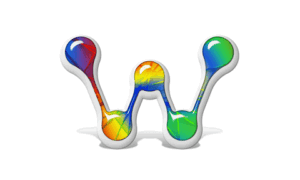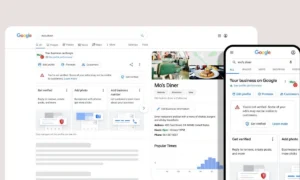As the sun rises over Silicon Valley, a seismic shift is quietly reshaping the landscape of technology and innovation. Gone are the days when circuit boards and physical gadgets dominated conversations; today, software reigns as the lifeblood of this bustling tech hub. In a world where apps can launch startups overnight, hardware has taken a backseat to algorithms, cloud computing, and artificial intelligence. But what does this transition mean for developers, entrepreneurs, and consumers? Join us as we dive into Silicon Valley’s journey from its hardware roots to becoming a veritable Mecca for software-driven solutions—where creativity meets code in an exhilarating race toward the future!
Introduction: What is Silicon Valley and its significance in tech industry?
Silicon Valley, a name synonymous with innovation, has long been the heartbeat of the tech industry. Nestled in California’s Bay Area, this region has birthed some of the most groundbreaking technologies and companies that have transformed our world. From microprocessors to smartphones, Silicon Valley was once dominated by hardware giants who revolutionized how we interact with technology.
However, as the digital landscape evolved, so too did the focus within this iconic hub. The shift from tangible devices to intangible software solutions marked a significant transformation—one that reshaped not just local businesses but also global markets. Understanding this transition is crucial for anyone curious about where tech is headed next and what it means for consumers and creators alike. Let’s dive deeper into Silicon Valley’s journey from hardware dominance to software supremacy!
The Rise of Hardware in Silicon Valley
Silicon Valley’s roots are deeply entrenched in hardware innovation. In the early days, visionary engineers and entrepreneurs pushed boundaries. They created groundbreaking products that changed how we interact with technology.
From pioneering microprocessors to developing personal computers, companies like Intel and Apple paved the way for a new tech era. The excitement around tangible devices drove investment and talent into the region. Manufacturing facilities flourished, creating thousands of jobs.
The rush to build faster computers, efficient circuits, and innovative gadgets led to a thriving ecosystem of startups and established firms alike. Engineers experimented relentlessly, often collaborating across organizations to refine their designs.
This period marked an explosion of creativity focused on physical products—each breakthrough laying the groundwork for what was yet to come in software development. As consumer demand grew for these devices, so did Silicon Valley’s reputation as a global tech leader driven by hardware excellence.
The Shift to Software: Key Factors and Events that led to the transition
The shift to software in Silicon Valley was a gradual yet profound transformation. As the internet gained traction in the late 1990s, companies began recognizing its potential. The dot-com boom sparked a wave of innovation, pushing many hardware-centric businesses to rethink their strategies.
Emerging technologies like cloud computing and mobile applications further accelerated this change. Startups realized that software offered scalability and flexibility unmatched by traditional hardware products. Investors took notice, shifting funding towards software development instead of manufacturing.
Key players such as Apple and Google set new standards with their focus on seamless user experiences through software solutions. This not only attracted consumers but also created a ripple effect across various industries.
Moreover, consumer demand for instant access and continuous updates played a crucial role. People wanted more than just physical products; they craved ongoing engagement through services powered by innovative software solutions.
Impact on Tech Industry: How did the shift affect companies, employees, and consumers?
The transition from hardware to software in Silicon Valley reshaped the tech landscape profoundly. Companies that once relied on physical products began focusing on digital solutions, enabling rapid innovation and scalability.
This shift also transformed job roles within organizations. Engineers and developers became essential assets as businesses sought talent skilled in coding, cloud computing, and data analytics. Traditional manufacturing jobs diminished, leading many professionals to upskill or pivot their careers entirely.
For consumers, the impact was significant. Software-centric companies could deliver updates seamlessly through the internet. Devices evolved into platforms for ongoing engagement rather than one-time purchases.
Moreover, subscription models emerged, changing how users access technology and services. Consumers now enjoy greater flexibility but face challenges with perpetual payments instead of singular investments in hardware. This new approach fosters a continuous relationship between companies and customers based on recurring value delivery rather than isolated transactions.
Examples of Successful Transitions: Case studies on companies that successfully made the switch from hardware to software
software development their revenue but also redefined consumer engagement.
Another compelling case is Microsoft. Originally a software behemoth, it recognized the importance of cloud computing early on. By transitioning to Azure, Microsoft solidified its position as a leader in the cloud space while still maintaining hardware lines like Surface devices.
Adobe also made waves by moving from packaged software to subscription-based models with Creative Cloud. This shift allowed them to foster continuous innovation and deeper customer relationships.
These companies exemplify how embracing software can lead to sustainable growth and adaptability in an ever-evolving tech landscape. Their journeys reflect resilience and foresight that others can learn from amid shifting market dynamics.
Challenges Faced during the Transition
The transition from hardware to software in Silicon Valley wasn’t seamless. Companies often struggled with a shift in mindset. Engineers and developers had to adapt their skills, moving away from physical products to intangible solutions.
Resource allocation posed another challenge. Investing heavily in software requires different funding strategies compared to traditional hardware development. Many firms found it hard to redirect resources effectively.
Competition also intensified during this period. Startups emerged rapidly, focusing solely on software innovations, making it tough for established companies rooted in hardware manufacturing.
Cultural shifts within organizations added complexity too. Employees accustomed to tangible results faced difficulties adjusting to the iterative nature of software development.
Lastly, customer expectations evolved quickly as well. Software users seek constant updates and improvements, creating pressure on companies still grappling with their new direction.
Lessons Learned and Future Predictions: What can we learn from this transition? How will it shape the future of Silicon Valley?
The transition from hardware to software in Silicon Valley teaches us the importance of adaptability. Companies that embraced change thrived, while those clinging to traditional models struggled.
Innovation is no longer just about creating physical products. It’s also about delivering seamless digital experiences. The focus has shifted towards user-centric designs and agile development methodologies.
Future predictions indicate a continued emphasis on artificial intelligence and machine learning. Software will not only enhance productivity but also redefine industries by automating processes previously deemed complex.
As tech evolves, collaboration between hardware and software will likely amplify. This synergy can drive unprecedented growth opportunities for startups and established companies alike.
Silicon Valley may soon see an influx of talent focused on coding over engineering, reflecting this shift in priorities. The landscape is ever-changing, making it crucial for businesses to stay ahead of trends to remain relevant amidst continuous disruption.
Conclusion
The transition from hardware to software in Silicon Valley has been a monumental shift, leading to the creation of some of the most innovative and successful companies in recent years. This change has allowed for faster growth, more scalability, and greater impact on society at large. While hardware will always have its place, it is clear that software is now the driving force behind tech innovation in Silicon Valley. As technology continues to evolve and shape our world, we can expect this trend to continue and lead us into an exciting future full of endless possibilities.


































